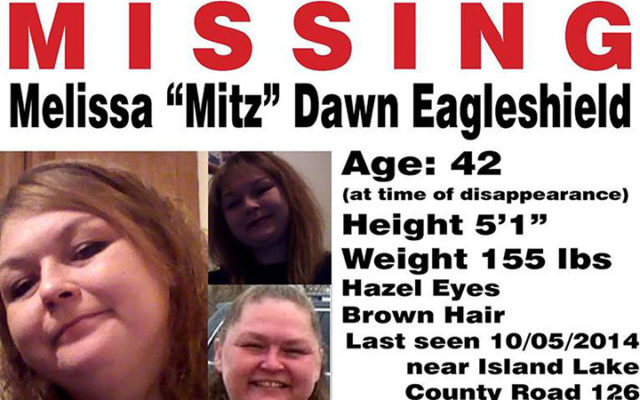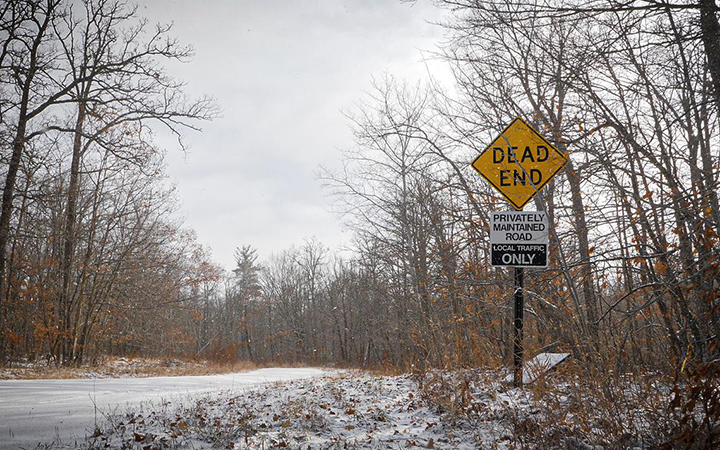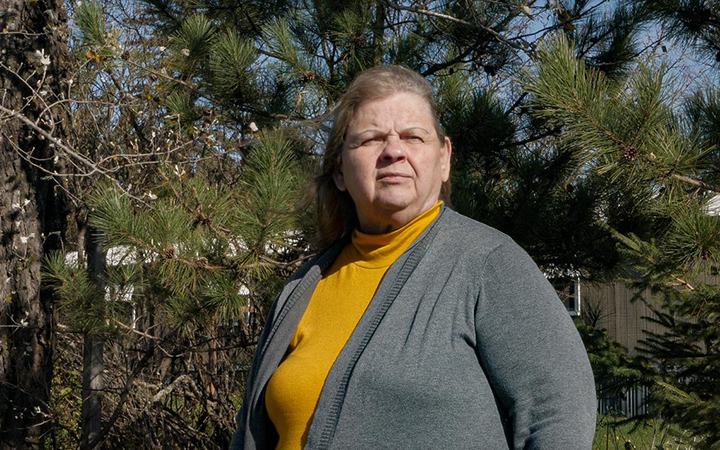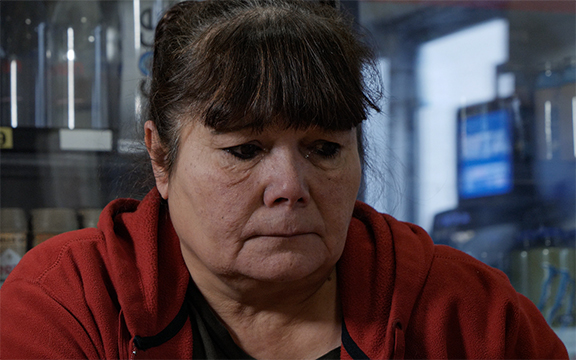
By Natasha Rausch, Sarah Mearhoff and Dana Ferguson / Inforum
Editor’s note: This is the first installment of a three-part series on the crisis of missing and murdered Indigenous women in the upper Plains.
It’s been five years since Linda Anderson last saw her daughter. And she hasn’t stopped looking since. Her daughter Melissa Eagleshield, then 42, vanished in the middle of an autumn night. Her socks, shoes, purse, left behind at a house in the middle of the woods. It was dark and only a few degrees above freezing when she was last seen at the house.
Investigators think perhaps Eagleshield wandered off in the middle of the night, losing her way in the unforgiving wilderness of Becker County in Minnesota. Her mom thinks something more foul happened.
No one knows for sure, as Eagleshield has yet to be found. But her mom is certain about one thing: Her daughter isn’t alive. She would have called one of her kids or grandkids, or used the money left in her bank account by now, Anderson said. At this point, Anderson is just hoping for “closure.”
“It’s just a long, hard journey of no answers,” she said. “You’re always looking, but there’s no answers.”
Eagleshield, a descendant of the White Earth Nation in Minnesota, is one of the thousands of Indigenous people who have gone missing in the 21st century. The precise number of missing Indigenous people, however, is still unknown because of inadequate data collection, according to Global Indigenous Council acting president Tom Rodgers.
Annita Lucchesi, a Cheyenne woman, is working to determine that number. With no initial funding or institutional support, she founded the Sovereign Bodies Institute in 2019, with the goal of documenting every case of a missing or murdered Indigenous person in North America. In February 2019, she told South Dakota legislators that she alone had documented over 4,000 cases in the United States and Canada – 158 from South Dakota, and 35 from North Dakota since 1900.

“This violence is happening on a truly tremendous proportion,” she said.
‘It’s very deep-rooted’
Historian and South Dakota state Sen. Tamara St. John, a Republican from the Sisseton Wahpeton Oyate Tribe, said last year that cases of Indigenous women gone missing and forgotten “go on and on,” fueled by the long-term historical trauma of colonialism, stereotyping and dehumanization. She told fellow legislators the story of Lakota Rae Renville, a shy girl from her tribe who police assumed was a prostitute after she was murdered at 22 years old in 2005.
“When Native women are portrayed in such a way, I think that adds to that perception, or even to depersonalize individuals and not see us as mothers or maybe a young working woman,” she told reporters.
The crisis has also been linked to natural resource mining on reservations, jurisdictional disputes between local, state, tribal and federal authorities, a convoluted justice system that doesn’t always hold non-Native perpetrators accountable, insufficient law enforcement in often remote Indian Country, and longstanding struggles with poverty on reservations.
And it goes by many names, such as missing and murdered Indigenous women, women and girls, people, or even relatives. And the problem dates back to European colonists. The earliest well-known case is that of Pocahontas, a member of the Powhatan Tribe, who was taken by English settlers in the early 17th Century.

In the upper Plains alone, hundreds of Dakota women and children died after being exiled from Minnesota to Crow Creek, South Dakota, in 1862. Less than 30 years later, hundreds of Lakota men, women and children were slaughtered by U.S. troops in the 1890 massacre at Wounded Knee, for which U.S. soldiers received Medals of Honor.
During the boarding school era from 1869 to the 1960s, hundreds of thousands of Indigenous children were removed from their homes and put into schools where they suffered physical and sexual abuse. As recently as the 1950s and 1960s, Native women have alleged abuse at Catholic boarding schools in Marty, South Dakota.
“It’s very deep-rooted,” said North Dakota state Rep. Ruth Buffalo, D-Fargo. “Until uncomfortable conversations and addressing the atrocities that Indigenous people have faced over time, what we’re seeing today is a symptom.”
By 2016, the U.S. Department of Justice estimated more than half of Indigenous women have experienced sexual violence in their lifetimes, and they’re 1.7 times more likely than white women to have experienced violence in the past year. Also in 2016, the National Crime Information Center logged almost 6,000 cases of missing and murdered Indigenous people in the U.S.
But that figure is low, according to the Global Indigenous Council, as many cases go unreported, or a person’s tribal affiliation goes unrecorded.
As more Native women have been elected to state, local and federal offices, they’ve brought forth proposals to better understand and address the crisis. In Minnesota, a state task force was created to probe the issue and find state-level solutions. And North and South Dakota have passed legislation calling for increased data collection and law enforcement training on the issue.
But advocates say that’s not enough. And at the federal level, Congress has failed to pass reforms that could forge meaningful change.
Cases of missing and murdered Indigenous women continue to be reported in the region and beyond. Meanwhile, as more go missing, family members, friends and others have continued searching, picking up where law enforcement left off or opted not to pursue investigations.
Still out there
Melissa Eagleshield was last seen near Island Lake in Becker County, Minnesota – outside the boundaries of the White Earth Reservation.
Her case fell to the Becker County Sheriff’s Office. Todd Glander was the sergeant on duty the night Eagleshield’s cousin called 911 to report a missing person. Glander is now the county sheriff.
The call came in at 7:20 p.m. on Oct. 5, 2014, at least 14 hours after Eagleshield was last seen, police records show. Officers quickly determined Eagleshield had last been seen at a house on Jager Road, south of County Road 126 near Island Lake. Dan Jager, who lived at the house, told police he last saw her at 5 a.m. Assuming she found a ride or went to meet somebody, he didn’t report her missing right away.
Around 10 p.m. that night, searchers descended on the area. Becker County Sheriff’s Office and Detroit Lakes Fire Department showed up; Hubbard County brought a search dog and two snowmobiles; Sanford AirMed sent a helicopter. The Frazee and Wolf Lake fire departments also joined the effort. The next day, even more help arrived, from the White Earth Police Department and state patrol.

Once the search began, “I don’t believe we quit looking,” Glander said. “This search started, and once it started, essentially it hasn’t ended.”
Every fall, spring and summer, the search continues. Though it’s been more than five years since she went missing, Glander still remembers the cool weather on the first night of the search, and he wonders whether she was dressed for the elements, having seen many cases of hypothermia.
Jager Road is a dead end leading to the woods – a vast expanse of trees, hills, low ground, swamps, ponds and lakes. It’s beautiful, but it’s easy to get lost. Or not be found. Eagleshield’s mom, cousins and aunts have been out searching, too, though not going too deep into the woods.
According to her mom, Eagleshield was a spunky person. When she was growing up, she was mechanically inclined, too, once taking the bolts out of all the doors in the apartment just for fun.
Her aunt, 56-year-old Pauline Keezer, said Eagleshield was funny, that most people remember her sense of humor. She was outgoing, too. Keezer remembers babysitting her when she was young and then frequently running into her in Detroit Lakes when she’d grown up.
“I pray for her every night,” Keezer said. “It’s not knowing. That’s the hardest part. Not knowing what happened, where she’s at, who could do such terrible things.”
Anderson said Eagleshield started drinking alcohol as a teenager and eventually became addicted. She had her first daughter when she was 15. As an adult, Eagleshield was frequently homeless and “part of a bad crowd,” her mom said.
But Anderson said the community should be safe for everyone. “It isn’t about whether you’re an addict, or you’re homeless, or whatever. You’re still a valuable person.”
Lissa Yellow Bird-Chase, who’s dedicated her life to searching for missing people, has helped search for Eagleshield. “Missy’s out there,” she said. “She’s out in that forest. I just know it.”
Because the case is still open, Glander said there aren’t any conclusions yet on what happened to her. “We’re not ruling anything out right now,” he said, but “at this point, we have nothing to indicate that foul play was involved.”
Anderson thinks differently. “It was dark. It was cold,” she said. “You don’t walk away barefoot. I think something happened.”
But with her daughter still missing, Anderson said she doesn’t know for sure. After all these years, she just wants answers. And for that, she said, “You always have to have hope.”
If you or someone you know is a victim of violence, call the National Indian Women Resource Center at 406-477-3896 or the StrongHearts Native Helpline at
1-844-762-8483. In an emergency, call 911.






